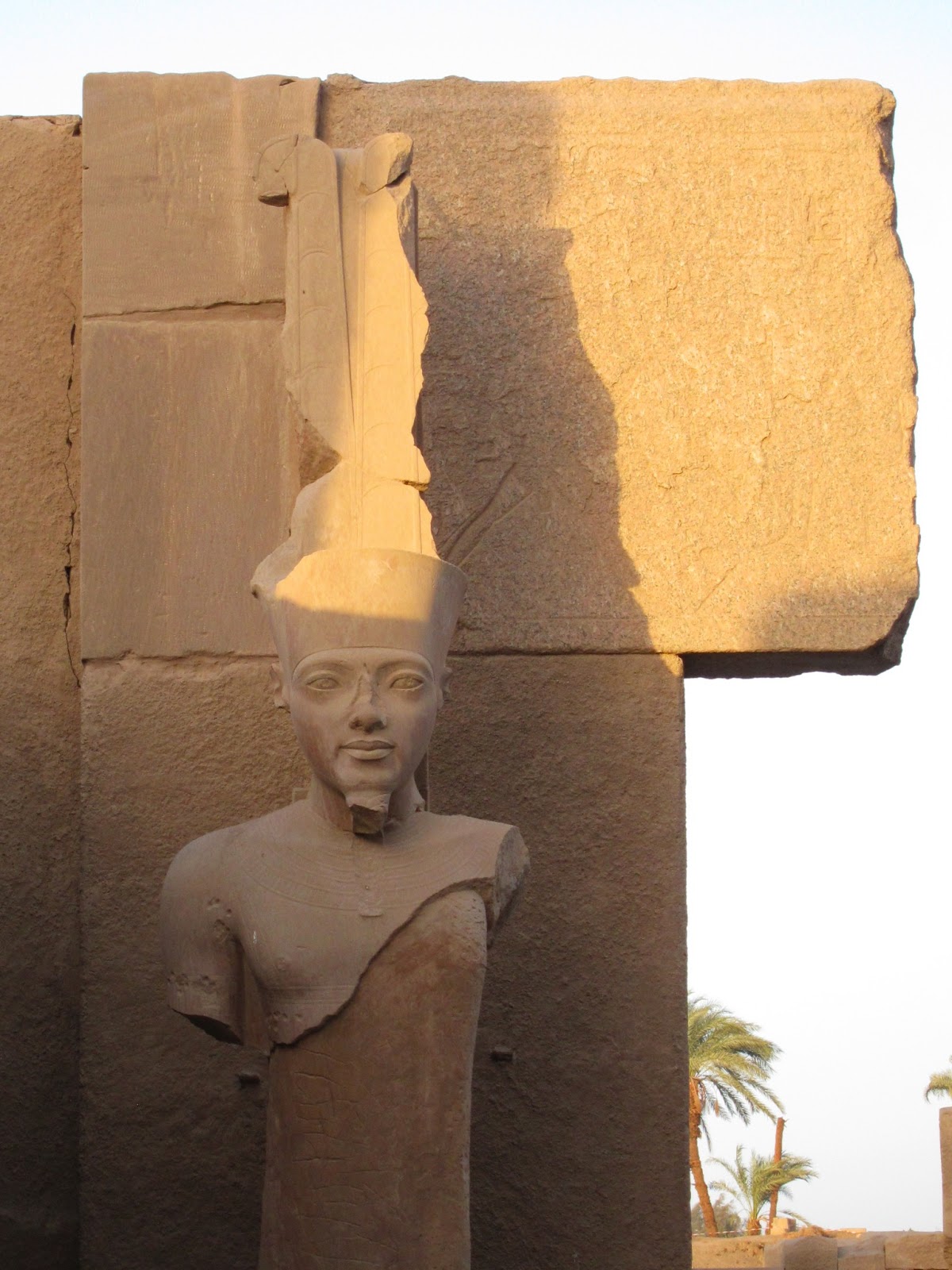Up before the sun, day 3 in Egypt started in darkness, through which we were driven with alarming speed. In record time, our Memphis Tours driver had us back at the airport to board our flight to Luxor. Terribly sore from a day of excavating through pyramids, I was happy to sit still for an hour as our plane flew south. Once we landed, we were delivered to the M/S Sonesta Star Goddess, our cruise ship for the next four days.
However, it wasn't long before I was met with yet another disappointment. Because we signed up for a honeymoon themed tour package, I had assumed that the entire trip would be privately guided. Unfortunately, this was not to be the case as I quickly learned that we were now part of a tour group of nearly 30 people! While I didn't have any grandiose visions for a romantic getaway, I was counting on having some autonomy in our sightseeing. Instead, we found ourselves languishing for hours on the ship, waiting for the rest of our tour group to arrive by a very delayed train.
When at last they arrived in the late afternoon, we were herded onto a tour bus and taken to the famed Karnak Temple. Looking back, our trip to Egypt was filled with many "movie moments." Crawling into pyramids, I felt like Indiana Jones and riding through the desert on camelback felt like something straight from Lawrence of Arabia. Our visit to Karnak Temple was certainly no exception, as I had never before in my life felt quite so transported. To this day, I can't quite put my finger on what movie would come close to capturing my experience at Karnak but it was certainly epic and fantastical.
In high school, I grew up on the 14th floor of a 15-story apartment complex built on top of a hill. Since then I've made my residence in a whole slew of major US cities filled with skyscrapers and high-rises. All this to say, I am no stranger to tall buildings and many of the structures of ancient Egypt couldn't hold a candle to some of today's modern superstructures. So what is it about ancient Egyptian columns that I find to be so breathtakingly magnificent? Is it because they are always arranged in an impressive multitude that seems to magnify their size? Or is it because knowing that they were built with brute human force makes me appreciate their stature that much more? Sigh, in all honesty I wish I could tell you but all I can say is, you've really got to be there to feel it.
To be honest, I don't remember much of the historic details we were told about Karnak Temple. I think I was too overwhelmed with the wealth of photographic opportunities. Another reason is because as our guidebook states, it had been "built, added to, dismantled, restored, enlarged, and decorated over nearly 1500 years." As it was the most important place of worship in Egypt during the New Kingdom, it seemed that nearly every pharaoh tried their hand at making their own mark on the temple. Statues and obelisks were erected, then defaced or toppled, and eventually moved to museums or gifted to foreign countries. Consequently, as majestic as it was, much of the layout and decor of Karnak seemed somewhat haphazard. This was only compounded by the piles of rubble from deteriorated structures. With that kind of history it was hard to get a snapshot and almost impossible to keep track of all the changes.
I think I could easily spend an entire day or even weeks at Karnak Temple but with the sun quickly dipping below the horizon, we had to tear ourselves away and head back to the bus. As it quickly became dark, I was worried because we still had Luxor Temple on the itinerary before heading back to the ship. But T seemed pleased as he had read that night was an ideal time to visit the temple. It didn't take long to see that he was right.
While much smaller in scale compared to Karnak, we found Luxor to be no less impressive nor with any less of a checkered past. Built by Queen Hatshepsut and enlarged by Amenhotep III, the temple bears evidence of further alterations made by Tutankhamun, Ramses II, and even Alexander the Great. Even before entering we could see the contributions of Ramses II who erected the first pylon, decorating it with reliefs of his military exploits. Our guide explained that Ramses also aligned the pylon with 6 massive statues of himself, of which only three remain. Originally, two obelisks also stood on either side of the entrance but one was removed and now stands in Paris.
Eventually the temple declined and became partly covered with sand. Over time, people returned to the area and unwittingly built a mosque on top of an interior court of the temple. When the temple was rediscovered, much of it was excavated (some parts are still being uncovered) but the mosque still remains.
Unlike, Karnak, the layout of Luxor Temple seemed much more linear with courtyards leading through colonnades leading to more courtyards and eventually to the actual shrine. Embellished by the dramatic lights and shadows of the night, the temple seemed to deepen its charisma the further we entered. So intoxicated was I that I hardly minded my hunger as we headed back to the ship for a full course dinner.





















0 comments:
Post a Comment